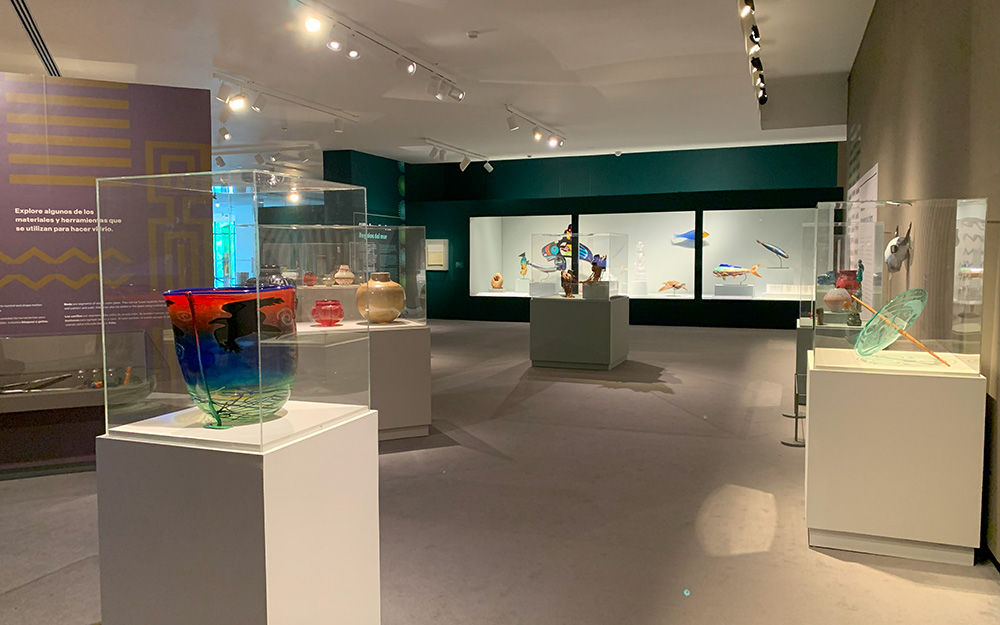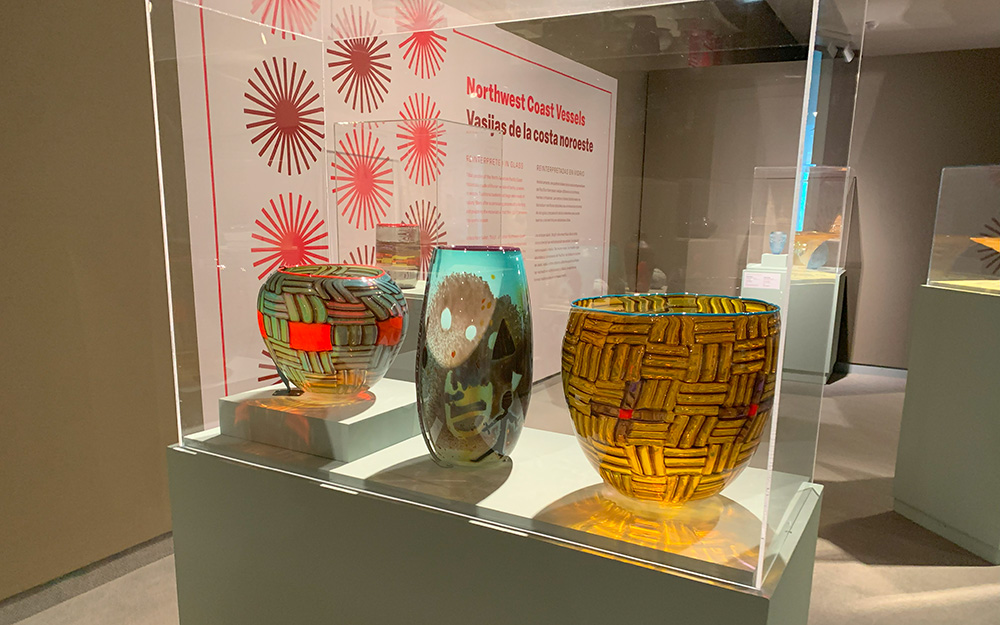- Events & Programs Home
- Calendar
- Accessibility
- Adults
-
Families & Teens
- Families & Teens Home
- 10x10 Teen Art Expo
- Art on the Rise
- Art Together: Art Making for Families with Children Ages 3–5
- Babies Sing with May Festival Minis
- Boy Scouts / Girl Scouts
- CAM Kids Day
- Family Storytime and Gallery Walk
- Family Studio: Art Making for Families with Children Ages 6–12
- Games in the Galleries
- Members-Only Baby Tours
- Public Baby Tours
- REC Reads
- Rosenthal Education Center (REC)
- Saturday Morning Art Class
- See Play Learn Kits
- Summer Camp
- Teen Fest: Zine and Comic Exchange
- RECreate
- Teachers
- Community Outreach
- Fundraisers
- Plan Your Own Event

- Events & Programs Home
- Calendar
- Accessibility
- Adults
-
Families & Teens
- Families & Teens Home
- 10x10 Teen Art Expo
- Art on the Rise
- Art Together: Art Making for Families with Children Ages 3–5
- Babies Sing with May Festival Minis
- Boy Scouts / Girl Scouts
- CAM Kids Day
- Family Storytime and Gallery Walk
- Family Studio: Art Making for Families with Children Ages 6–12
- Games in the Galleries
- Members-Only Baby Tours
- Public Baby Tours
- REC Reads
- Rosenthal Education Center (REC)
- Saturday Morning Art Class
- See Play Learn Kits
- Summer Camp
- Teen Fest: Zine and Comic Exchange
- RECreate
- Teachers
- Community Outreach
- Fundraisers
- Plan Your Own Event
Blog: CAM Uncovered
Blog: CAM Uncovered
- Home
- Plan Your Visit
- Art
-
Events & Programs
- Events & Programs Home
- Calendar
- Accessibility
- Adults
-
Families & Teens
- Families & Teens Home
- 10x10 Teen Art Expo
- Art on the Rise
- Art Together: Art Making for Families with Children Ages 3–5
- Babies Sing with May Festival Minis
- Boy Scouts / Girl Scouts
- CAM Kids Day
- Family Storytime and Gallery Walk
- Family Studio: Art Making for Families with Children Ages 6–12
- Games in the Galleries
- Members-Only Baby Tours
- Public Baby Tours
- REC Reads
- Rosenthal Education Center (REC)
- Saturday Morning Art Class
- See Play Learn Kits
- Summer Camp
- Teen Fest: Zine and Comic Exchange
- RECreate
- Teachers
- Community Outreach
- Fundraisers
- Plan Your Own Event
- Give & Join
- About
- Tickets
- Calendar
- Exhibitions
- Collections
- Blog
- Shop
Illuminating the Exhibition Process
by Amy Dehan, Curator of Decorative Arts and Design
12/21/2023
exhibitions , Curatorial Blog , exhibition design , exhibition development , Clearly Indigenous: Native Visions Reimagined in Glass , Dr. Letitia Chambers , Joe Feddersen
As a curator, I’m often asked how long it takes to bring an exhibition together. The answer is . . . it varies. It can depend on a myriad of things such as whether our museum is organizing the exhibition, if there is a publication associated with the project, and how the show fits into the institution’s workflow.
CAM’s upcoming exhibition, Clearly Indigenous: Native Visions Reimagined in Glass (December 15, 2023 – April 7, 2024) was organized by the Museum of Indian Arts and Culture in Santa Fe, New Mexico, and curated by Dr. Letitia Chambers who has been a part of the Indigenous community for decades. The show comes to our museum via the firm IA&A (International Arts & Artists) which specializes in developing and circulating exhibitions around the country and abroad.
In the biz, an exhibition that comes to our museum in this way is sometimes referred to as a “canned show”—differentiating it from those we originate and organize ourselves. While this phrase suggests we simply pop the exhibition into our galleries—easy peasy—nothing could be further from the truth. Our museum-wide team puts months’ worth of thought and prep work into the project to customize the exhibition for our audience and our space.
One part of this work can entail traveling to the museum that is presenting the exhibition before us to experience the show and learn from their approaches. In July 2023—about five months before the exhibition was scheduled to open in Cincinnati—CAM’s exhibition designer, Lauren Walker, and I traveled to the Wichita Art Museum in Kansas to see their presentation of Clearly Indigenous.
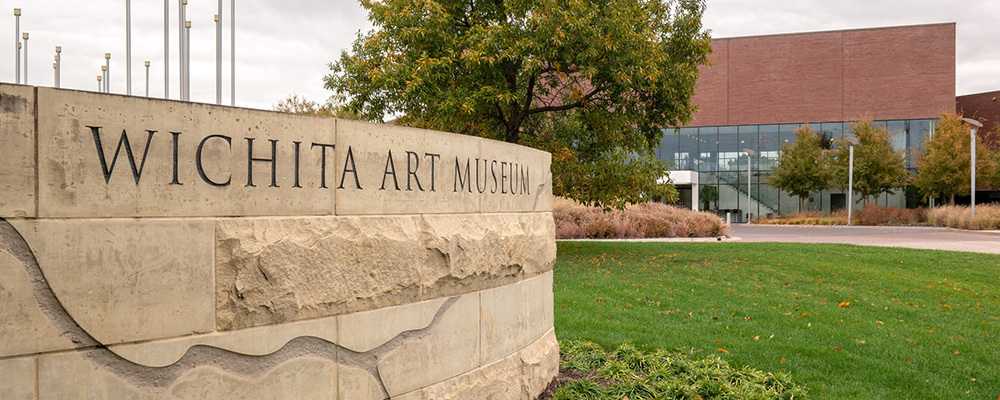
In addition to viewing the exhibition and snapping lots of reference photos, we met with our Wichita colleagues to learn more about their experiences with the show. How were audiences responding? What types of programs did Wichita develop to coincide with the project? What kind of related merch did they sell in their shop? Which pieces were more challenging to install? Did they experience any surprises that we should consider when presenting the work?
With this shared knowledge, we returned to Cincinnati to create our own customized presentation. In the next months, our exhibition team chose wall colors and created graphic elements to “brand” the exhibition. We developed a plan for presenting Clearly Indigenous in our galleries—placing each object on a measured floor plan and building and retrofitting casework. We designed and proofread labels and wall texts and developed audio components of the exhibition for our accessibility community. We trained our staff and volunteers to create tours and share information about the exhibition with visitors. We coordinated special lectures, programs, and events to build on and out from the exhibition.
It has been a busy and productive time for all of us here at CAM as we work to present the 120 examples of extraordinary glass works by 33 Indigenous artists in Clearly Indigenous in a way that honors and highlights their talents and contributions and resonates with our visitors. Finally, in these last few weeks, we have been uncrating and installing the work.
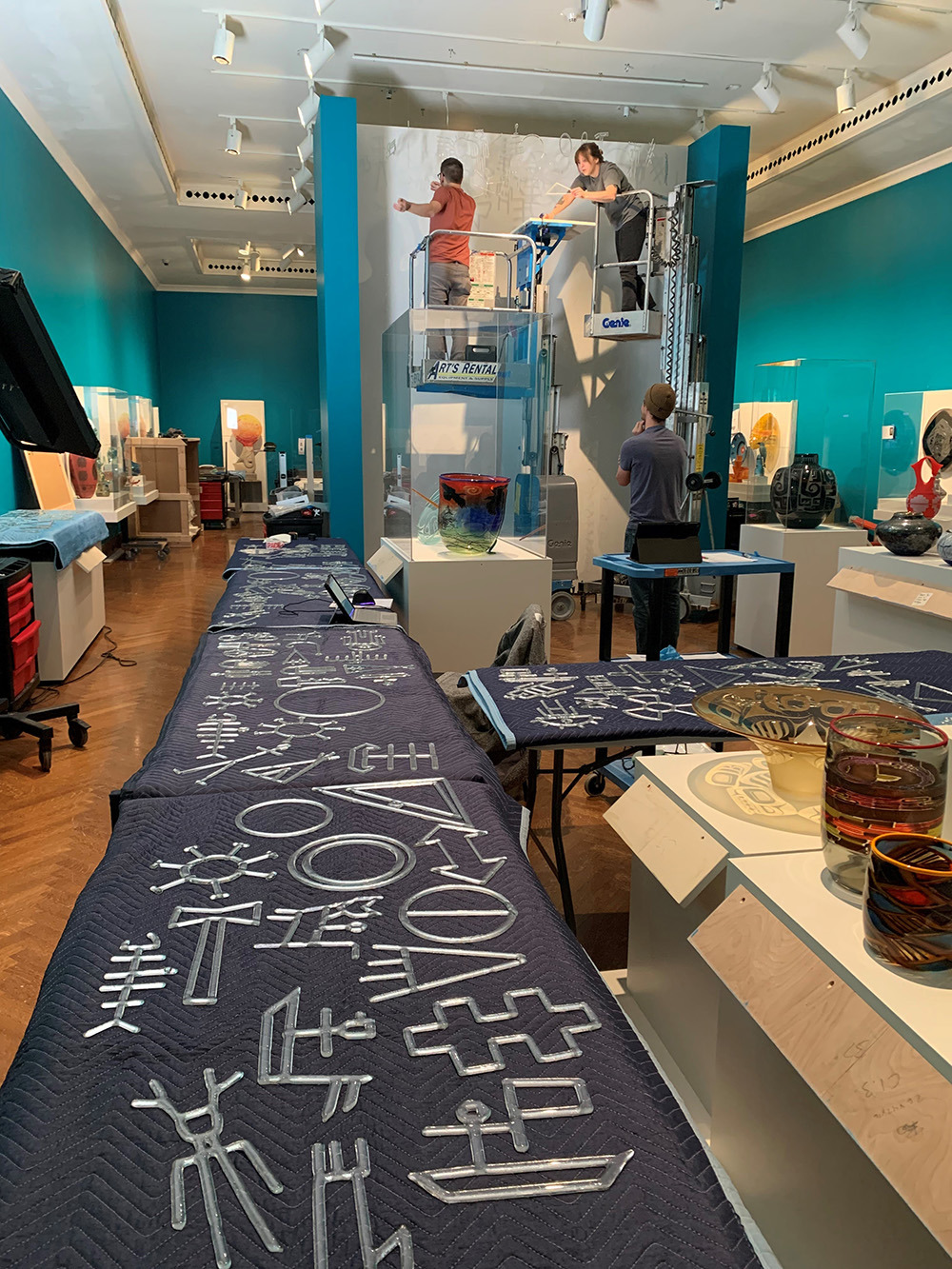
Enjoy this sneak peek of Joe Feddersen’s Charmed, a large-scale piece created with over 200 clear glass charms—varying in size from 4 x 4 inches to 20 x 20 inches—that hang from the ceiling, dancing in the air and creating beautiful shadows. Here, you see museum staff carefully handling the charms and tying them together one-by-one, per the direction of the artist who joined us virtually for the installation from his home in Omak, Washington, on the Colville Reservation.
Check out this video to learn more about Joe Feddersen and this work. Then, visit CAM’s presentation of Clearly Indigenous, created just for you!
Related Blog Posts
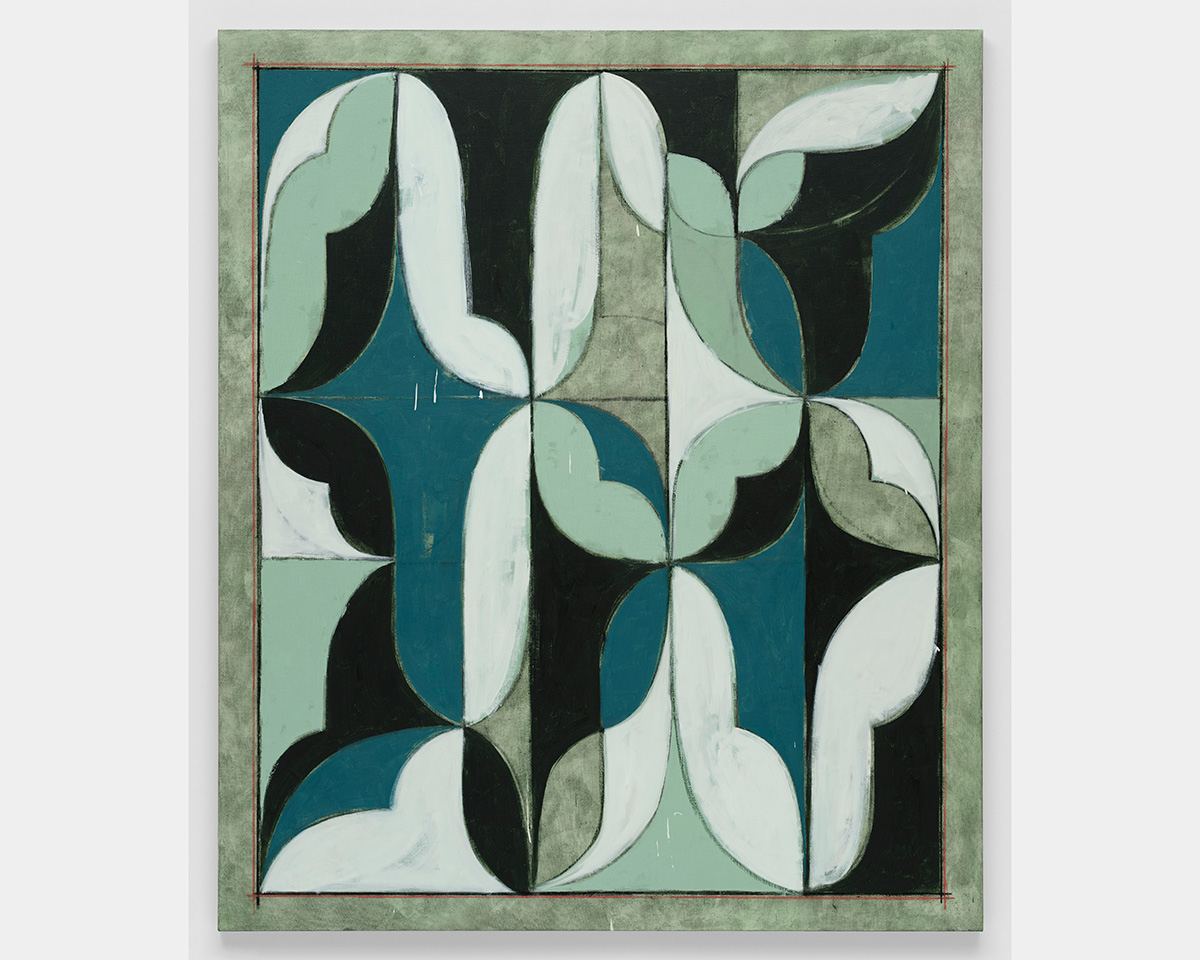

Cincinnati, OH 45202
Toll Free: 1 (877) 472-4226
Museum Hours
Museum Shop
Terrace Café
Library
Cincinnati Art Museum is supported by the tens of thousands of people who give generously to the annual ArtsWave Campaign, the region's primary source for arts funding.

Free general admission to the Cincinnati Art Museum is made possible by a gift from the Rosenthal Family Foundation. Exhibition pricing may vary. Parking at the Cincinnati Art Museum is free.
Generous support for our extended Thursday hours is provided by Art Bridges Foundation’s Access for All program.

General operating support provided by:



